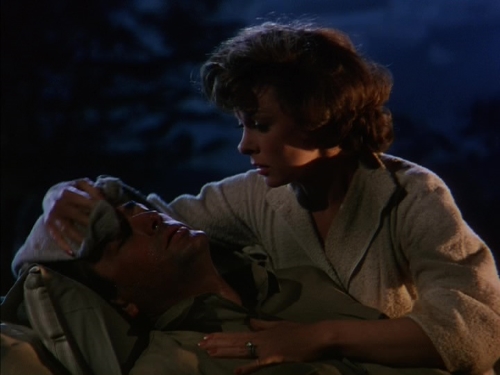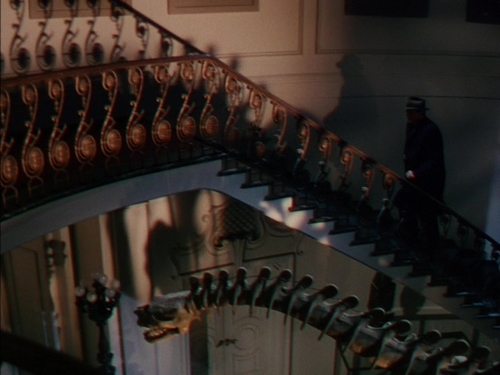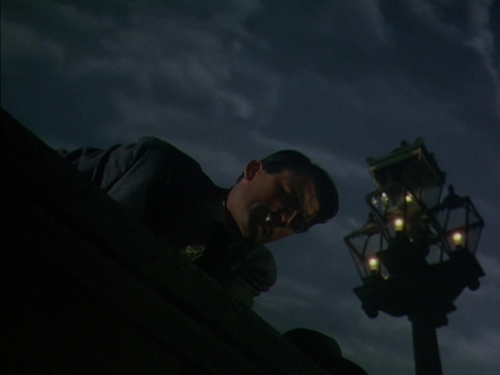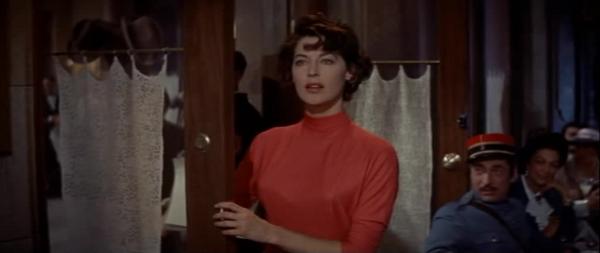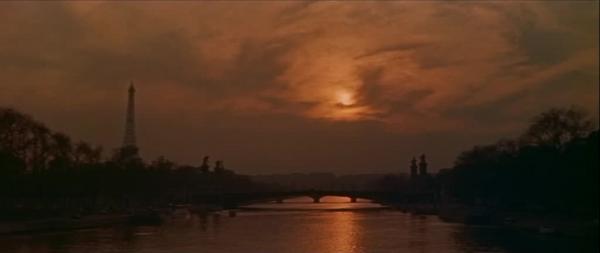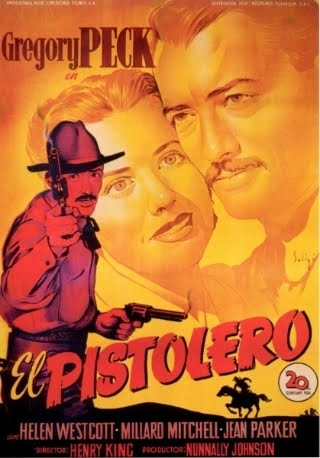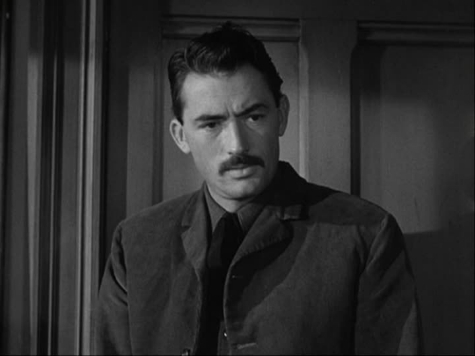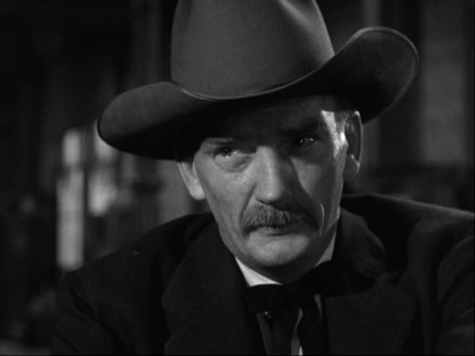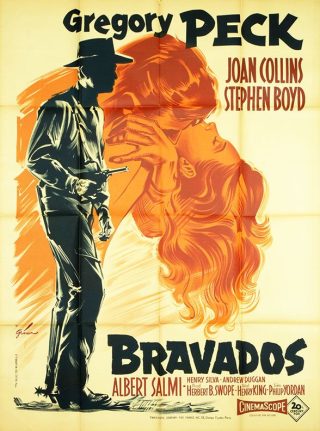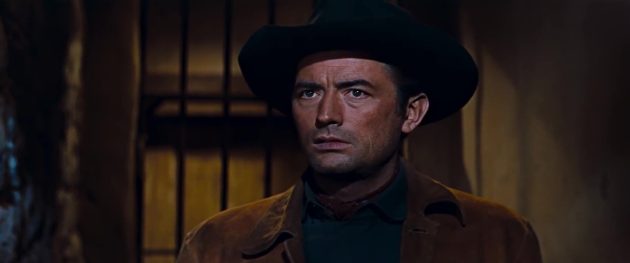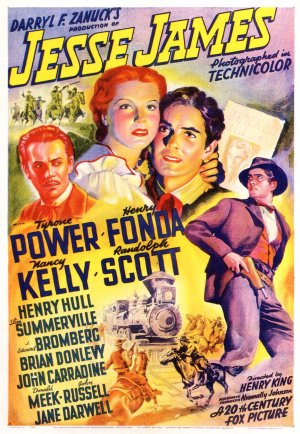Kilimanjaro is a snow-covered mountain 19,710 feet high and is said to be the highest mountain in Africa. Close to the western summit, there Is the dried and frozen carcass of a leopard. No one has explained what the leopard was seeking at that altitude.
Those are the words which are spoken at the beginning of The Snows of Kilimanjaro (1952), words which are by and large the same as those which open the Ernest Hemingway short story of the same name. There’s something of a paradox in the fact that the above quote is slightly abridged, whereas the story brought to the screen greatly expands upon the author’s original text. Hemingway is said to have been displeased with the end result, allegedly because Casey Robinson’s script folds in elements of so many of the author’s other works, and perhaps partly because the fleshing out that occurs shifts the emphasis of the narrative. It alters the ending too, quite radically in fact, and I’m of the opinion that it is for the better. Hemingway aficionados (and I count myself as one) may find that hard to swallow, but I shall try to work my way through my reasoning as we go along.
Harry Street (Gregory Peck) is a writer, but what is more important is that he is a dying man. He knows this, he can hardly fail to do so as he’s laid up in camp with the poison from an infected leg wound slowly pumping its way round his body. He’s being tended to by Helen (Susan Hayward), a rich woman whose company he needs and desires even as he spurns her attention and her affection. Not unnaturally for a man whose future is limited, Harry spends a lot of his time casting his mind back. The primary focus of those reminiscences is on the women in his life. While there does appear to be a degree of spitefulness or baiting to his revisiting the memories of his late loves and then telling Helen about them, the overriding sense is one of wistfulness, a kind of regret for opportunities not so much missed as elbowed aside in the ongoing quest for artistic success. Hemingway’s story, partly on account of its brevity, only touched on those memories, sights, sounds and flavors of a time that cannot be recaptured. However, where Hemingway drew attention to the words never written and the tales never told, the movie (while not actually ignoring those omissions) has Harry lamenting the loves he let slip away.
Harry’s flashbacks to those earlier days take in interludes in the USA and on the Riviera, but the bulk of the time is devoted to his stays in Paris and Spain, and to the woman who captured his heart, became his muse and then whose loss consumed him. Cynthia Green (Ava Gardner) is first encountered in a bar in Paris, dancing and laughing and stealing Harry’s heart in the half minute or so available to her. Then later in some improvised jazz club, in an atmosphere laden with intellectualism and melancholy, swept along by a slow and sultry saxophone, they embark on the affair that will define them, sealed by the simple expedient of lighting their cigarettes off a shared match. It’s a beautifully shot scene, Henry King’s painterly mise en scène bathed in Leon Shamroy’s blue and golden hues evoking a smoky eroticism that is both heightened and tempered by the gently charged flirtation of a woman merely “trying to be happy” and a man who has maybe found the essence of his own truth in that moment.
Those sequences charting the course of the relationship between Harry and Cynthia constitute the heart of the movie, and they are at best only alluded to in Hemingway’s story. Some of the description that Harry imparts via voiceover is directly lifted, but the events and their development and integration into the story is the work of Casey Robinson, an impressive piece of work in that it skillfully draws in strands of other Hemingway writings and captures the flavor and spirit of the author. For this viewer it not only works, but works well. Between them, King, Robinson and Darryl F Zanuck manage to turn what was a fine short story into a movie that adds new layers and nuance.
Then there is the ending, which is where the biggest departure from the source material is to be found. Hemingway wrote a lot about life and death, his whole attitude to hunting and bullfighting being closely tied to his feelings on this. His story sees Harry pondering the work he will not now complete, of what he had thought of doing but never actually did. And then he dies and his final thoughts take him up the peak of Kilimanjaro to commune with or perhaps even in some sense become that leopard referred to in the opening lines. He is then in his last moments a man making peace with his restlessness and his creative spirit, dreaming his way to the high ground.
The film takes a different path, presenting Harry with a salvation that is more comprehensive, more human. His creativity remains intact simply due to the fact that he is saved. What I feel is more important though, and it’s a big part of what I prefer about the movie, is that the higher plane achieved is not that conjured within the dreams of a dying man, instead it is a tangible one that can only exist in the living. It is a rediscovery of life, the will to live and the purpose of that life, coming about largely through his spiritual reconciliation with the women, both in the past and in the present, who have shaped his work and his character. Where the story on the page suggested fulfillment attained through death, the movie offers a vision of fulfillment won through living.
In the lead role Gregory Peck grows into the part, the character of Harry proving to be a complex one, and not an especially admirable one in many respects. There’s a good deal of self-regarding pomposity to him and Peck gets that across well. It’s that central part of the film, however, that solid dramatic core, where he explores the part in greater depth. One sequence in particular stands out for me, coming after the traumas of his sojourns in the Riviera and in Spain, where Harry finds himself back in Paris, and to be specific back in the bar where he and Cynthia first glimpsed each other. As he sits and thinks of those distant days, he turns around and fancies he sees the specter of Cynthia dancing from out of the mists of his past, laughing and full of joie de vivre. And the blend of emotions that chase across his features – hope jousting against regret and despair in an uneven contest – strike right to the heart of the man at that point.
The real strength of the movie, in terms of performances anyway, derives from Ava Gardner. Her role is essentially a riff on Lady Brett Ashley, the character she would go on to play for Henry King in his adaptation of The Sun Also Rises a few years later, albeit with less of the emotional bruising present. In her own words, Cynthia represented the first role she understood and felt comfortable with and that she truly wanted to play. That desire to have the part is always in evidence in her unaffected and naturalistic playing, and the inherent truth of that performance seems somehow appropriate for a character in a Hemingway adaptation. Susan Hayward was the other big star name and she too was well cast in a role that drew on her strengths as an actress, that characteristically tough resolve built as a shield around her vulnerability. In support Hildegarde Neff, Leo G Carroll, Torin Thatcher and Marcel Dalio all do creditable work.
I think I first caught The Snows of Kilimanjaro as a TV broadcast some time in the early to mid-1980s. I liked it well enough then, even if all aspects of the movie didn’t resonate with me to the same extent as they do now. I held off getting any home video version for a long time as the movie spent years as one of those dreadful looking public domain staples. Eventually, Fox released their own official version, one which is generally very pleasing to view. Hemingway purists might feel put out at the changes made to the story, but I feel the efforts of Zanuck, Casey Robinson and Henry King (helped along by the scoring of Bernard Herrmann) work and the result is a movie that stands up on its own terms, and brings out themes and ideas that the brief nature of the original material did not allow.

